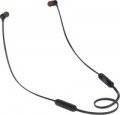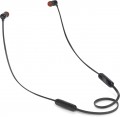The time required to fully charge the battery in properly powered headphones (see above).
In this case, we mean the battery charging time from 0 to 100% when using a standard charger (or a third-party charger with identical characteristics). Accordingly, in fact, this indicator may differ from the claimed one, depending on the specifics of the situation. However, in general, it is quite possible to evaluate different models and compare them with each other: headphones with a shorter claimed charging time will in fact charge faster (ceteris paribus).
Also note that an increase in battery capacity (and headphone battery life) inevitably implies an increase in charging time. To compensate for this moment, special fast charging technologies can be used — however, they affect the cost and require the use of specialized charger.
The type of connector used to charge the built-in battery of the headphones, or more precisely, to connect an external charger. The role of such a device can be played by a network or car adapter, a power bank, or even a USB port of a PC or laptop (if there is an appropriate cable). At the same time, in true wireless models (there are
with a leg,
without a leg,
with an ear mount and
clips (Clip-on)), the "charger" cable is connected to a special docking station, where the "ears" are placed during charging (while the station itself usually has its own battery and can also work as an autonomous power bank). And in wireless and combined solutions of a more traditional design, the charging input is often located on the body of the headphones themselves. As for the connectors, the most common options are the following:
—
microUSB. A smaller version of the USB connector, created for portable devices. It appeared quite a long time ago, but it has not lost its popularity in our time, and is used by the absolute majority of manufacturers.
—
USB C. A miniature USB connector, positioned, among other things, as a potential successor to microUSB. Unlike its predecessor, it has a two-sided design, thanks to which the plug can be inserted into the socket from either
...side. It is still relatively rare, but the situation is likely to change in the coming years.
— Lightning. Apple's proprietary connector. Like USB C, it has a two-sided design, and is somewhat more convenient and reliable, but the use of Lightning is limited to products from Apple itself and its Beats brand.
